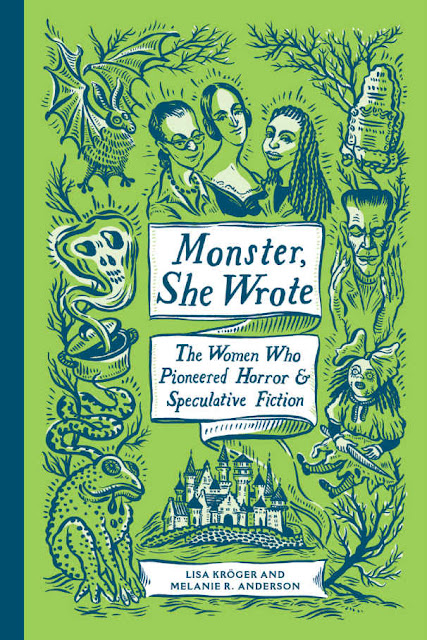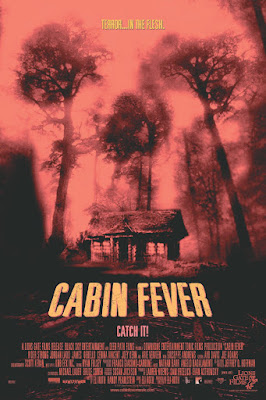Copyright 2010 by Gary L. Pullman
A trilogy is a three-part series of novels, each of which tells a separate story, intelligible in itself, but which also, collectively, make up a longer, continuous narrative that is unified by various elements, such as the same cast of characters, the same settings, and the same or similar themes.
Perhaps one of the better known modern trilogies is J. R. R. Tolkien’s
The Lord of the Rings. Mervyn Peake’s
Gormenghast is also a well-known fantasy trilogy. Trilogies are relatively rare among horror novels.
The Pine Deep Trilogy, by Jonathan Maberry, is such a series, however. It focuses upon the “Most Haunted Town in America,” the futuristic Pine Deep, Pennsylvania. The trilogy’s title volumes are
Ghost Road Blues, devoted to the pursuit of serial killer Karl Ruger, who is attracted to Pine Deep by the ancient evil that resides thereabout;
Dead Man’s Song (2007); and
Bad Moon Rising (2008). The initial volume won the 2006 Bram Stoker Award for Best First Novel, the horror genre’s highest prize.
The plot?
Thirty years before the opening of the series’ present-day story, Oren Morse, a traveling field hand and blues musician whom the community’s children nickname the “Bone Man,” kills Ubel Griswold, a werewolf who’d been terrorizing Pine Deep. Local racists, blaming Morse for Griswold’s killings, murder Morse. Fifteen years later, Griswold’s spirit awakens, and, assisted by Vic Wingate, the werewolf seeks revenge upon Pine Deep.
Among those whom Morse saved was nine-year old Malcolm Crow, who now owns a craft store based upon a Halloween theme. His fiancé, Val Guthrie, is also a survivor of the original massacre. Their friend, Pine Deep’s mayor, Terry Wolfe, suffered a nervous breakdown as a result of his sister’s having been murdered (and his own near murder) by Griswold.
In
Ghost Road Blues, Ruger attacks Val and her family again. Wingate’s adopted son, Mike Sweeney, who dreams of confronting various evils, is targeted by Tow-Truck Eddie after “God” tells Eddie that Mike is the antichrist. In reality, “God’s” voice is that of Griswold.
In
Dead Man’s Song, Crow and local newsman Willard Fowler Newton, research the events of thirty years ago, while Wingate and Ruger assemble an army of the undead for Griswold to command during the “Red Wave,” a massive attack on Halloween night. While Crow and Newton visit Dark Hollow, where Griswold had both lived and died, one of Ruger’s companions, Boyd, becomes a vampire and Griswold’s ghost sets a trap for Crow, as Wingate sends Boyd after Val.
In
Bad Moon Rising, Crow and his friends learn the truth concerning their foes, just as the Red Wave is about to get underway.
The formula for Maberry’s trilogy is simple, but effective:
1. An ancient evil returns.
2. The ancient evil repeats its atrocities.
3. Armed with knowledge concerning the ancient evil, the protagonist combats it.
Another trilogy by a well-known writer who has written horror fiction in the past and still dabbles in the genre on occasion is
Dean Koontz’s Frankenstein series:
Prodigal Son, co-authored with Kevin J. Anderson (2004),
City of Night, co-authored with Ed Gorman (2005), and
Dead and Alive (2009). (Now we know, I guess, how "Koontz" manages to write so many novels so quickly; he has more help than just his handful of psuedonyms.)
Dead Souls (2010) launches a
second trilogy on the same theme.
Koontz, whose plots are often recycled and derivative of his own previous work and the works of others, is at least making no bones about such redundancies in the writing and co-writing of these trilogies.
In Koontz’s Frankenstein update, Victor Frankenstein, now going by the name Victor Helios, has set up shop, so to speak, in New Orleans, where he uses synthetic biology to create a new race of androids as replacements for the human race, much to the chagrin of his nemeses, police detectives, Carson O’Connor and Michael Madison, and his original monster, who is now known as Deucalion. The new creatures’ personalities are downloaded directly into their brains through the wonders of computer technology.
The plot?
In
Prodigal Son, O’Connor and Madison pursue a serial killer dubbed “The Surgeon.” Attracted by the killer’s serial murders, Frankenstein’s monster believes that his creator has somehow returned.
In
City of Night, the detectives team up with the monster to stop Helios and the army of programmed android killers that Helios has unleashed upon New Orleans.
In
Dead and Alive, the series’ grand finale takes place as Deucalion leads the hordes of his master’s creatures against Helios himself in a confrontation that is part showdown and part revenge. Koontz, however, hints at the sequel that is to launch his second Frankenstein series. After all, there’s gold in them thar monsters.
The formula for Koontz’s trilogy is simple, but effective:
1. An ancient evil returns.
2. The ancient evil repeats its atrocities.
3. Armed with knowledge concerning the ancient evil, the protagonist combats it.
The formula for both Maberry’s and Koontz’s trilogies suggest that Stephen King’s It could have been a trilogy; at over 1,000 pages, it is certainly long enough to have been broken into three installments, in which the first, the second, and the third, respectively, would present a plot in which--
1. An ancient evil returns.
2. The ancient evil repeats its atrocities.
3. Armed with knowledge concerning the ancient evil, the protagonist combats it.
Wait! Isn’t that also the plot of King’s
Desperation? And of Dan Simmons’
Summer of Night? And of Bentley Little’s
The Resort? And. . . .mmm. . . it seems we may be onto something here (maybe the reason there are comparatively so few horror novel trilogies).










































